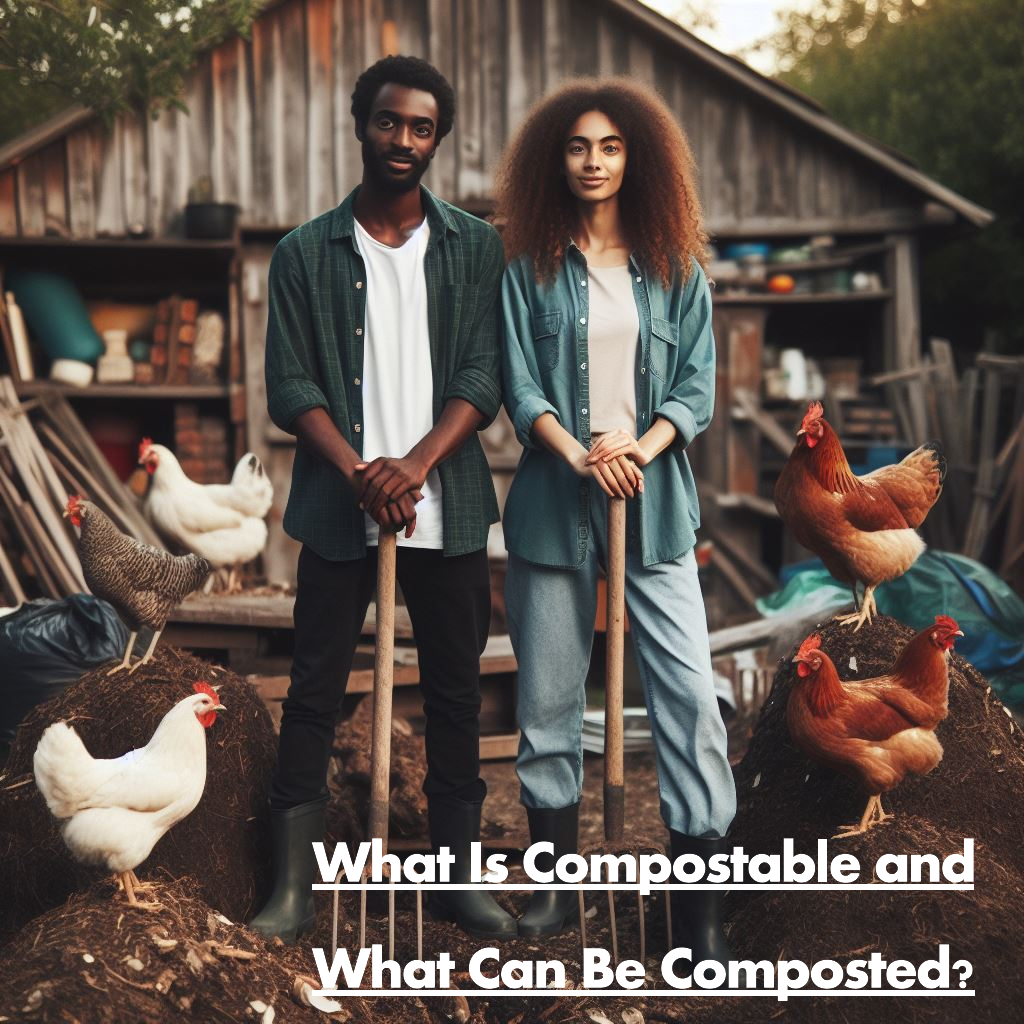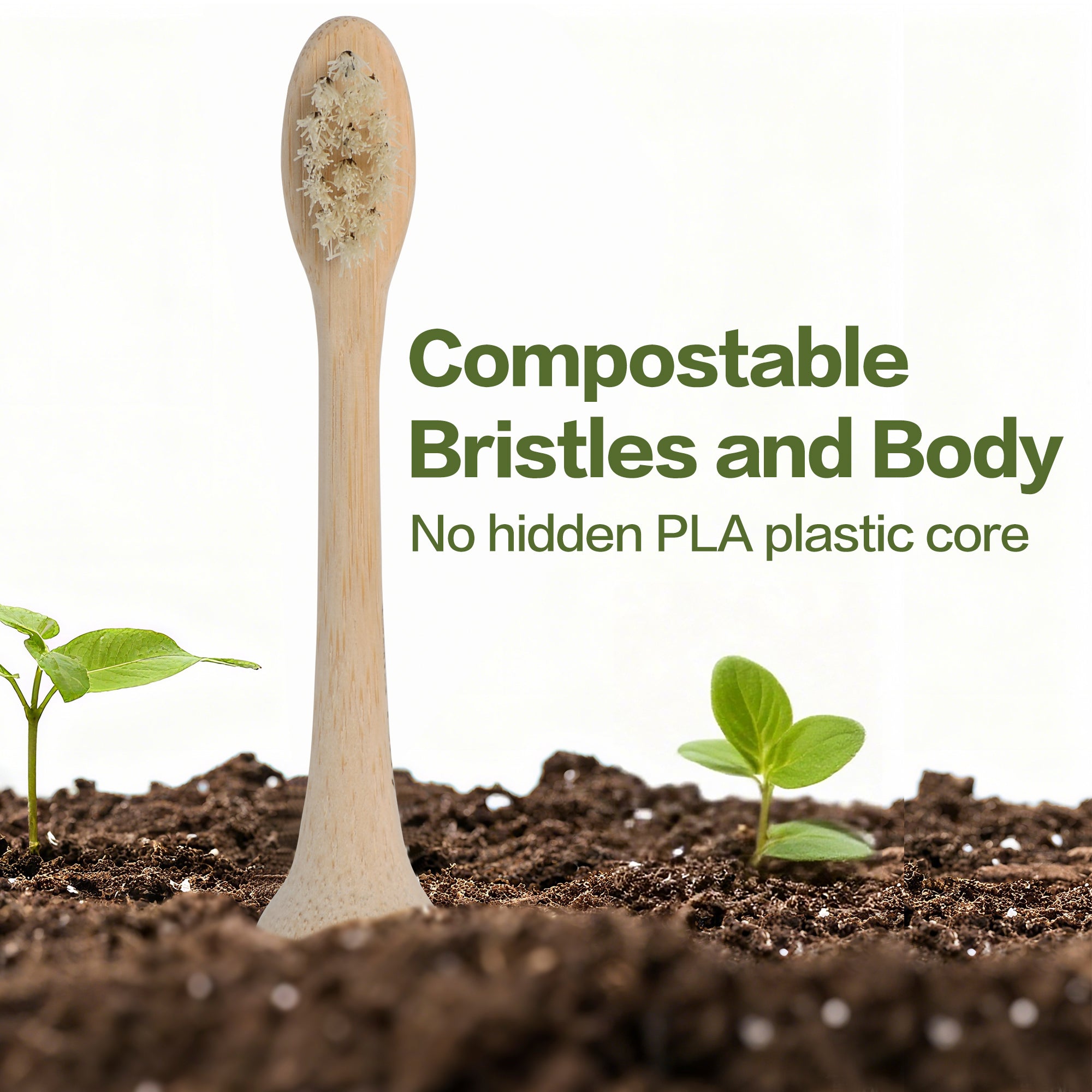Composting is a simple and effective way to reduce household waste. However the benefits of composing are numerous.
According to the EPA, composting can reduce a household's trash by up to 60%! That could be reason enough for you to take the fun though somewhat daunting steps towards becoming an earth hero by composting your food waste.

In this ultimate guide to composting, you will learn everything you need to know about getting started with composting. From what to compost and why it's important, to home and commercially compostable items, this guide covers it all. Whether you're a beginner or an experienced composter, this guide will provide valuable information to help you reduce your environmental impact and feel good about doing your part.
What is Compost?
Compost is the process of breaking down food scraps, plants, and other organic materials into nutrient-rich soil. It's an environmentally friendly way to reduce waste and improve soil health. Composting can be done at home or on a larger scale, and it's a great way to give back to the earth.
What can be composted?
If was living before then it can be composted. Any organic material a human or animal would eat can be composted.
You can get into C:N i.e. Carbon to Nitrogen ratios but basically trying have about 30-40% nitrogen to 60-70% carbon would be good. There are other factors like heat, moisture and size of composting materials i.e. mass which all factor into decomposition speed.
By following these guides and knowing what to compost, anyone can start their own composting system and contribute to a healthier planet.
Composting for Beginners
Home Compostable:
When it comes to composting, there are two main types to consider: home compostable and commercially compostable. Home compostable items can be easily broken down in a home compost bin with fruits and vegetables. This includes items such as eggshells, coffee grounds, and yard waste. These items can be placed in a tumbler, worm bin, or DIY bin that is set up at home.
Look for items labeled as "Certified Compostable for both commercial facilities and backyard composting" to ensure that they will break down in your backyard bin. These items include things like paper, cardboard, and certain types of bioplastics. Check out BPI product link list.
Commercially Compostable:
Industrial and commercial composting facilities have specialized equipment designed to break down more difficult items such as meat, dairy, fish scraps, baked goods, oils, and bioplastics. These facilities are heated, which breaks things down very quickly.
It is important to note that these items should not be placed in a home compost heap because they will take a long time to break down and can attract outdoor pests. Instead, they should be taken to a commercial composting facility or included in municipal composting programs.
In summary, understanding the difference between home compostable and commercially compostable items is crucial for successful composting. By properly disposing of compostable items, we can reduce waste and help the environment.
Understanding the Difference: Biodegradable vs Compostable
In the realm of eco-friendly products, distinguishing between "biodegradable" and "compostable" is crucial. While all compostable items are biodegradable, the reverse isn't always true. The distinction lies in specific standards and time frames.
Biodegradable Facts:
- Biodegradation is the breakdown of organic carbon by microorganisms.
- Using "biodegradable" in sales is problematic due to its ambiguity and potential for greenwashing.
- It's not suitable for marketing single-use items, especially if they resemble compostable products.
Embracing Compostability:
- BPI certification ensures adherence to compostability standards.
- Describing products as "compostable" clarifies their end-of-life attributes and reduces contamination risks.
- Promoting consistent terminology aids consumers in making informed choices.
What is Composting?
Composting is the process of breaking down organic materials into a nutrient-rich soil amendment. Compostable items are those that can be broken down into this rich soil amendment through the process of composting.
Compostable items include food scraps, yard waste, and certain paper products, such as coffee filters and uncoated paper plates. However, it is important to note that what can be composted may vary depending on where you are composting and the guidelines of the composting facility.
Some items, such as meat, dairy, and oily foods can be composted despite what the internet may try and tell you. However, you do need to remember about the C:N rule of thumb and you may need to give your compost a boost with microbes.
You can find compost microbes in various places, but the most common sources include:
-
Existing Compost: If you have access to a compost pile or bin that's already active, you can use a shovel or scoop to collect some compost material, which will contain a diverse population of microbes.
-
Garden Soil: Microbes that aid in composting are also present in healthy garden soil. You can collect soil from your garden or any natural area where soil is rich and alive.
-
Decomposing Plant Material: Look for areas where plant material is naturally decomposing, such as under fallen leaves or in a forest. Microbes thrive in these environments.
-
Manure: If you have access to animal manure from herbivores (such as horses, cows, or chickens), it can introduce beneficial microbes to your compost pile.
-
Compost Starter Kits: You can also purchase compost starter kits from gardening stores, which contain a blend of beneficial microbes specifically formulated to jumpstart the composting process.
When adding microbes to your compost pile, ensure that they come from sources free of pesticides and harmful chemicals, as these can disrupt the composting process. Additionally, maintaining proper moisture and aeration in your compost pile will create a favorable environment for microbes to thrive and decompose organic matter efficiently.
Where can you find compost microbes to add to your pile?
Composting is an excellent way to reduce waste and create nutrient-rich soil for your plants. Composting is not just limited to food scraps, but many other household items can be composted as well. Here are some of the compostable household items that can be added to your compost bin.
Compostable Items in the Kitchen?
The kitchen is a great place to start composting. Organic matter that originates from plants or animals and is biodegradable can typically be composted. This includes fruit and vegetable scraps, paper products, yard waste, natural fibers, and certain kitchen and bathroom items.
Avoid composting materials that are heavily processed, treated with chemicals, or made from synthetic materials, as they may disrupt the composting process and potentially harm the environment.
What to Compost in the Bathroom
The bathroom may be the smallest room in the house, but it can still contribute to composting. Here are some of the compostable items that can be found in the bathroom:
- Hair
- Toilet paper rolls
- Nail clippings
- Silk floss (Don't be fooled by bamboo fiber as it really is nylon and PLA doesn't compost either.)
- Natural loofahs
- Bamboo toothbrush (not the bamboo charcoal bristles, but only boar hair bristle toothbrushes)
Challenges of Composting: Navigating Obstacles to Sustainable Waste Management
Composting stands as a beacon of sustainable waste management, offering a simple yet effective solution to reducing organic waste while enriching soils. However, beneath its eco-friendly facade lie several hurdles that impede its widespread adoption and efficacy. In this exploration, we delve into the challenges facing composting, shedding light on why these obstacles persist and what it means for the future of sustainable waste management.
Lack of Awareness and Education
One of the fundamental challenges plaguing composting initiatives is the pervasive lack of awareness and education. Many individuals remain unaware of the benefits of composting or how to effectively engage in the process. Without proper education on composting techniques, suitable materials, and environmental advantages, communities may not prioritize composting as a viable waste management option.
Consider the suburban household that discards food scraps without realizing their potential as compost material. Without education on composting's benefits and methods, these valuable resources end up in landfills, contributing to environmental degradation and missed opportunities for soil enrichment.
Urban Constraints
Urban environments present unique challenges to composting efforts. Space constraints, a hallmark of city living, pose a significant barrier to composting initiatives. Residents often lack the outdoor space necessary for composting bins or piles. Concerns about odors, pests, and aesthetics further deter urban dwellers from embracing composting, particularly in densely populated areas or apartment complexes.
Picture the bustling city where residents yearn to participate in composting but are thwarted by the realities of urban living. The lack of space and concerns about unsightly compost piles create barriers that seem insurmountable without creative solutions and community engagement.
Lack of Infrastructure
The absence of robust composting infrastructure presents another formidable challenge. Establishing and maintaining composting facilities require significant investment in technology, space, and operational costs. Many municipalities and organizations find themselves ill-equipped to foot the bill for such endeavors, hampering the expansion of composting initiatives.
Consider the rural community seeking to establish a composting program but lacking the necessary infrastructure and funding to make it a reality. Despite enthusiasm and local support, the absence of composting facilities stifles progress and perpetuates reliance on traditional waste management methods.
Contamination and Quality Control
Contamination poses a persistent threat to the quality of compost and its suitability for agricultural or landscaping purposes. Plastic, metal, and chemical contaminants compromise the integrity of compost, rendering it unfit for use. Improper sorting of waste streams and pollutants introduced during the composting process exacerbate the problem, necessitating stringent quality control measures.
Imagine the community garden initiative grappling with contaminated compost, undermining efforts to nurture healthy soil and produce bountiful harvests. Despite best intentions, contamination threatens to derail the project and undermine confidence in composting as a viable solution.
Regulatory Hurdles
Navigating regulatory frameworks presents yet another challenge for composting advocates. Regulations governing composting practices vary widely across jurisdictions, posing compliance hurdles and administrative burdens. Odor control mandates, environmental impact assessments, and product quality standards add layers of complexity to composting endeavors, requiring careful navigation and adherence.
In the face of regulatory uncertainty, municipalities and organizations must tread cautiously, mindful of legal pitfalls and bureaucratic red tape that could stifle progress and innovation.
Paving the Way Forward
The challenges facing composting are multifaceted and complex, requiring coordinated efforts and innovative solutions to overcome. From raising awareness and educating communities to investing in infrastructure and navigating regulatory landscapes, the path to sustainable waste management is fraught with obstacles.
Yet, amidst the challenges lie opportunities for growth, collaboration, and positive change. By addressing the barriers to composting head-on, we can unlock its full potential as a cornerstone of sustainable living and environmental stewardship.
As we confront the urgent imperatives of climate change and resource conservation, composting stands as a beacon of hope—a testament to the transformative power of collective action and environmental consciousness. In the face of adversity, let us rise to the challenge, embracing composting as a catalyst for change and a beacon of sustainability in an uncertain world.










